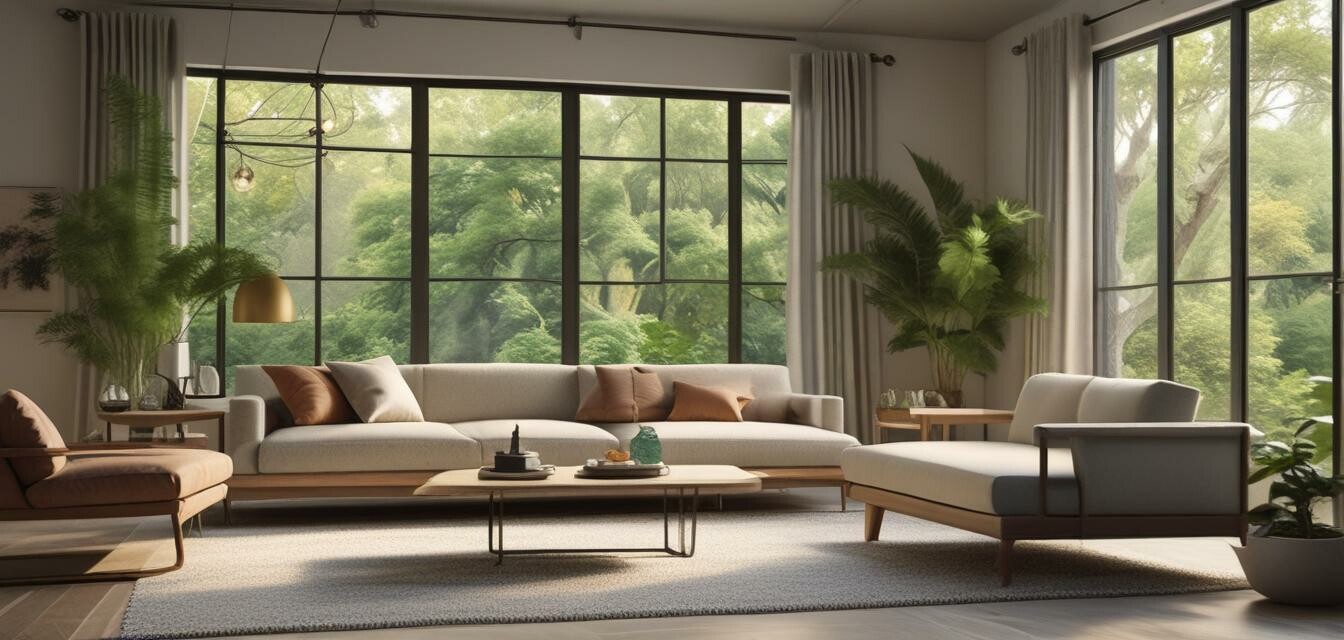
Boucle and sustainability: Eco-friendly manufacturing
Key Takeaways
- Boucle furnishings are increasingly manufactured using sustainable materials and practices.
- Eco-conscious approaches in production minimize environmental impact while maintaining quality.
- Adopting eco-friendly practices is becoming a trend in the interior design industry.
- Consumers are valuing sustainability, influencing the demand for eco-friendly products.
Boucle fabrics, with their unique texture and aesthetic charm, have garnered attention for their luxurious appeal. However, as 2024 unfolds, a growing emphasis on eco-friendliness is reshaping the manufacturing landscape of boucle furnishings. With consumers becoming more environmentally aware, manufacturers are taking significant steps toward sustainability. This article explores the eco-conscious approaches being utilized in the manufacturing of boucle furnishings.
The rise of eco-conscious manufacturing
The demand for sustainable products is on the rise, and the furniture industry is no exception. Eco-conscious manufacturing refers to production practices that prioritize environmental health, resource conservation, and ethical production.
Understanding sustainable materials
One of the key elements in sustainable manufacturing is the use of environmentally friendly materials. Here are some materials that are now commonly used in creating boucle furnishings:
| Material | Description | Eco-Impact |
|---|---|---|
| Recycled fibers | Fabrics made from post-consumer waste. | Reduces landfill waste and conserves resources. |
| Organic cotton | Cotton grown without pesticides or harmful chemicals. | Less environmental impact and healthier for farmers. |
| Bamboo fabric | Made from the bamboo plant, which grows quickly and renews naturally. | Lower carbon footprint and sustainable harvesting practices. |
| Tencel | A fiber made from sustainably sourced wood pulp. | Eco-friendly production process and biodegradable. |
Eco-friendly manufacturing practices
More than just materials, manufacturers are adopting practices designed to minimize environmental impacts. Let’s look at some prevalent eco-friendly manufacturing practices in the boucle furnishings industry:
- Water conservation: Many manufacturers are implementing processes to reduce water usage during production.
- Energy-efficient techniques: Utilizing renewable energy sources like solar and wind to power manufacturing plants.
- Waste reduction: Strategies for minimizing waste through recycling scraps and adopting zero waste principles.
- Transparent supply chains: Companies are increasingly focusing on transparency, ensuring all parts of the process are sustainable and ethically managed.
Consumer demand for sustainable choices
As awareness of environmental issues grows, consumers are seeking out products that align with their values. This trend has influenced the market significantly, pushing more brands toward sustainability. Here’s why consumers are prioritizing eco-friendly boucle furnishings:
Pros
- Supports sustainability and reduces environmental impact.
- Generally safer and healthier for indoor air quality.
- Promotes ethical production practices.
Cons
- Eco-friendly products can sometimes come at a higher price point.
- Limited availability in certain styles or designs.
Challenges in sustainable manufacturing
While the shift toward sustainability is impressive, it comes with its challenges. Here are a few hurdles that manufacturers face:
| Challenge | Description |
|---|---|
| Cost implications | Initial costs for sustainable materials and practices can be higher. |
| Supply chain adjustments | Finding new suppliers that meet sustainability criteria can be difficult. |
| Consumer awareness | Not all consumers are fully aware of the benefits of eco-friendly products. |
The future of boucle furnishings and sustainability
As we move through 2024 and beyond, the focus on sustainability in boucle furnishings will continue to grow. More brands will likely adopt eco-friendly materials and practices, making it easier for consumers to choose sustainable options.
How to choose sustainable boucle furnishings
When shopping for boucle furnishings, here are some tips to help identify sustainable options:
- Look for certifications, such as GOTS (Global Organic Textile Standard) or OEKO-TEX.
- Research the brand's commitment to eco-friendly practices.
- Prioritize products made from recycled or organic materials.
Conclusion
As the trends in boucle furnishings evolve, sustainability is key to a brighter future in home decor. By supporting manufacturers focused on eco-friendly practices, consumers can help shape the industry for the better. Whether it’s choosing sustainable boucle pillows or investing in a boucle sofa, every choice contributes to a healthier planet.
Explore more
Stay informed about the latest trends and tips in the world of boucle furnishings by checking out our blog categories, such as News and Trends, Buying Guides, and Care and Maintenance Tips.